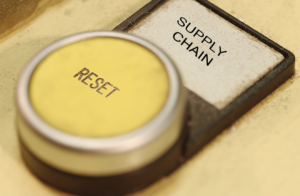Although a number of articles have declared the traditional sales funnel anachronistic, a quick Google search will return dozens of articles touting its efficacy. Kirk Williams (@PPCKirk), owner of ZATO, insists, “The marketing funnel isn’t dead.”[1] On the other hand, Mike Lieberman (@Mike2Marketing), CEO and Chief Revenue Scientist at Square 2, writes, “The sales funnel is dead.”[2] Each side has its proponents and offers its arguments. These arguments beg the following questions: Which, if any, subject matter experts are correct? And, if the sales funnel is dead, what’s replacing it? Williams notes, “The marketing funnel, for those unaware, is a concept created in 1898 to describe the ‘theoretical customer journey’ and assist in targeting the right message to the right person at the right time. … The funnel is typically seen as four categories that move from a broadening group of people (cold leads) to a smaller, more targeted and closer to purchase group of people (hot leads).” The four traditional categories (from cold lead to hot lead) are:
- Awareness
- Interest
- Desire
- Action
Using the first letter of each state, the traditional sales funnel is sometimes referred as the AIDA model. Williams readily admits much has changed in the sales and marketing arena since 1898; however, he also insists, “[There] are the two core, unchanging principles … in the marketing funnel.” Those principles are: 1) “There are stages of customer intent that change over time moving from less to more intentional in purchase behavior”; and 2) “these stages of customer purchase intent correlate with the number of people in those stages (i.e., more people in awareness, fewer closer to purchase action).”
Is the sales funnel dead?
Lieberman argues, “In the last decade, the Internet and social media have rewritten almost everything you knew about sales and marketing. … So why are you still using the outdated concept of a sales funnel? … It’s time for a paradigm shift.” Lieberman argues that sales and marketing people cling to the AIDA model because they feel in control; however, he argues, customers are now in control. He explains, “The fact is things have changed. … Today, customers are skeptical of brands. They’re able to identify marketing techniques, and they prefer to verify your claims. With the Internet at their fingertips, they can most definitely fact-check your statistics. Customers are also more independent when it comes to learning about new products and services. Buyers are often nearly 60% of the way through their journey before they contact a salesperson. When they do reach out to your team, today’s buyer might already have a good idea of what they’re looking for. Your job isn’t to tell them why they want what you offer, but to help them find a solution to the challenges they face.”
One reason the sales funnel isn’t as useful as it once was is the fact that consumers are now taking the digital path to purchase much more often. On the digital path to purchase, consumers can jump on or off the path at the click of a mouse or the flip of a fingertip. At the very best, this demonstrates that the funnel looks more like a sieve. Lieberman notes, “The new buyer’s journey is a bit chaotic. It’s also more accurately envisioned as a cycle, rather than the linear process of the funnel. In the old model, customers entered at the top of the funnel and exited at the bottom. Once they’d made a purchase, you were no longer concerned with them. This isn’t true in an age when an upset customer can call you out on Twitter as easily as a pleased customer can give you a shout-out. Once they’ve made a purchase, customers are with you, for better or worse. … Given this chaotic, cyclical nature, the modern buyer’s journey is best envisioned by a cyclone.”
Enter the flywheel
Many of the subject matter experts trying to find a constructive model to replace the sales funnel are developing circular models. Lieberman’s cyclone model is one such effort. He sees the new model as a continuous circle of marketing, sales, and service. Within that circle are eight little cyclones (or customer stages): Pre-Awareness; awareness; education; after awareness; consideration; evaluation; rationalization; decision; and ongoing delivery. Julia McCoy (@JuliaEMcCoy), CEO of Express Writers, calls her model “lifecycle marketing”.[3] She explains, “Modern buyers’ journeys are not even close to [being] linear, not to mention they hate impersonal marketing and cold/aggressive sales tactics. … Sales funnels don’t accurately model the modern buyer’s journey. Lifecycle marketing does.” She goes on to describe how lifecycle marketing works differently than the traditional marketing funnel.
- The lifecycle marketing model has no closed walls. “The lifecycle model breaks down the walls of the sales funnel and opens up the buyer’s journey model. In other words, it maps to real-life, modern customer journeys.”
- It includes loyalty as a major stage. “Another big difference between sales funnels and lifecycle marketing: Sales funnels don’t account for brand loyalty. Lifecycles do. In fact, loyalty and customer retention are two of the main goals of lifecycle marketing.”
- The shape is circular. “As you might have guessed, the shape of the lifecycle model is important to understanding how it works. It’s circular — a potential infinite loop. Once prospects become customers, they aren’t spit out and forgotten at the end of your sales process.”
Another popular model, called the flywheel, is also circular. Like Lieberman’s cyclone model, it focuses on a continuous circle of marketing, sales, and service, with the customer in the center of the circle. Dan Tyre (@dantyre), sales director at HubSpot, writes, “Armed with extensive online information, a modern buyer requires different skills from a salesperson and frequently exhibits different behavior than buyers of the past. A modern buyer may get very excited about a purchase and spend a lot of time in the research phase and then abruptly stop, ending the sales process sometimes without any reason at all. Often, modern buyers want to reduce the friction of buying and using a product to make it easy for them to achieve the value. These behaviors are why we suggest that you leverage a flywheel instead of a sales funnel.”[4] Digital marketing strategist Griffin LaFleur (@ghlafleur) also favors the flywheel model. He writes, “The flywheel approach puts the customer at the center of a company’s marketing activities.”[5] He adds, “[With the customer at the center of the model,] the rest of the flywheel is broken into three additional but equal segments representing the different stages of — or teams responsible for — the customer journey.” The flywheel stages include:
Attract. “The marketing team is responsible for creating content that attracts customers to the product and the brand.”
Engage. “The sales team engages customers and encourages them to purchase the product.”
Delight. “The service departments, including customer support and customer service, delight customers by assisting with
products and services and ensuring a great customer experience.”
Despite his preference for the flywheel model, LaFleur writes, “While businesses may be heading toward the flywheel approach, that does not mean the traditional funnel model is dead. Early-stage companies need to fill the top of that funnel so they have leads to nurture toward a closed won customer. By evolving toward a flywheel approach and focusing on the customer experience throughout, companies have a bigger advantage to re-engage, grow and receive more positive feedback or referrals from these customers.”
Concluding thoughts
One reason I like the flywheel approach is because it requires marketing, sales, and service teams to collaborate closely. Through close collaboration, Tyre notes, teams can identify what he calls “areas of force and friction.” He explains, “By identifying areas of force and friction, you can double-down on the activities that will bring more momentum to your ability to drive the sale, and remove unnecessary obstacles to create a frictionless experience. This will keep the flywheel moving forward, and your buyers happy.”
Footnotes
[1] Kirk Williams, “The Marketing Funnel Isn’t Dead, We Just Understand It Better,” Search Engine Journal, 27 June 2019.
[2] Mike Lieberman, “The Sales Funnel Is Dead: What’s Next?” Square 2 Blog, 4 February 2019.
[3] Julia McCoy, “Forget the Funnel: Join the Buyer’s Journey With Lifecycle Marketing Instead,” MarketingProfs, 22 May 2019.
[4] Dan Tyre, “Sales Funnels: What They Are & What You Should Make Instead,” Hubspot Blog, 21 March 2020.
[5] Griffin LaFleur, “Sales funnel vs. flywheel: How sales and marketing has evolved,” TechTarget, 25 September 2020.





